UNIT I: INTRODUCING DIVERSITY

The image above represents global diversity.[1] Pictured are various world regions with varying cultures and languages. The map highlights relationships among societies, inviting comparison and contrast of different nations and peoples.
What is diversity and why is it worth studying? How is it possible to examine just one form of identity (like race), when in our experience we have many social identities? How can we challenge injustice against particular racial or ethnic groups, while also treating all people with respect? In studying diversity, what insights can we gain about ourselves and our communities? How can we develop diversity competence—knowledge and skills enabling people of different social identities to interact with each other in mutually beneficial ways?
Chapter 1 Learning Objectives
1.1 Why Study Diversity?
- Explain why it is worthwhile to study diversity
- Identify ways diversity learning is applied in the real world
1.2 Overview of Diversity Concepts
- Understand the definition of diversity as both a fact and a value
- Explain key concepts central to diversity learning
1.3 A Sociological Approach to Diversity
- Explain what sociological theories are, and how they are used
- Differentiate among four major sociological theories: conflict theory, structural functionalism, symbolic interactionism, and feminism
1.4 A Comparative Approach to Diversity
- Understand the importance of a comparative (international, global) perspective in diversity learning
Chapter 1 Key Terms (in order of appearance in chapter)
diversity: (1) as a fact: the observation that people and groups have varying characteristics; (2) as a value: respect for people who differ from oneself
multiculturalism: the fact (or value) that American democracy is (or should be) culturally pluralistic, rather than culturally homogeneous
diversity competence: knowledge and skills enabling people of different social identities to interact with each other in mutually beneficial ways
intersectionality: people of crosscutting social identities often experience the world in different ways
sociology: the social science that studies the organization of society’s structures and processes
paradigm: a broad scientific worldview or perspective. For example, symbolic interactionism is a sociological paradigm, generating many testable theories.
feminism: the view that traditional male control of women should change, giving women more power over their own lives
sexual orientation: the direction of sexual attraction: to opposite sex, to same sex, to all sexes, to no sexes
cisgender: your body parts are the same as your gender identity. (The Latin prefix “cis-” means “on this side.”)
transgender: your body parts differ from your gender identity. (The Latin prefix “trans-” means “across,” “on other side.”
LGBTIQ: lesbian, gay, bisexual (sexual attraction to both females and males), transgender, intersex (having both female and male genitalia or sex organs), queer (an umbrella word for non-heterosexual, non-cisgender). It’s not always easy to interpret one’s sexuality or sexual experiences, and Q can also mean “questioning” (unsure of one’s sexual or gender identity).
American globalism: Since 1945, the U.S. has been the predominant military, economic, cultural, and ideological power in the world, with global commitments, relationships, and interests
mestizo: combined non-European and European ancestry, especially in Latin America
indigenous: referring to non-European, American first nations (e.g., Native American or Indian nations such as Cherokee or Sioux)
1.1 Why Study Diversity?
“America the beautiful,
Who are you beautiful for?”
This poetry was written by an anonymous student in one of the racially segregated and impoverished American public high schools visited during 1988-1990 by writer Jonathan Kozol (1991:112).[2] The student is asking the overall question this textbook seeks to address: What is the relationship between inequalities of social power and racial-ethnic diversity?
In the twenty-first century, America is a country of enormous social diversity (APAN:II:886). In addition to this sheer demographic fact (see Table 1.1 below), diversity is also a social value that more and more Americans say is important. Virtually all Americans say (on scientific surveys) that they believe in the importance of social values like democracy, efficiency, fairness, equality, and prosperity (Wright & Rogers 2011). In recent decades, an increasing number have included diversity in this list (Chun & Feagin 2020).
Diversity is an ordinary English word meaning variety or difference. It began to take on its current political meaning (respect for people different from oneself) during the 1970s. Social heterogeneity refers to all dimensions of social identity: race-ethnicity, gender and sexuality, socioeconomic class, ability, age, etc. The 1960s-70s were decades of international social movements advocating racial justice and marginalized identity empowerment. Also, in 1965 the U.S. Immigration Act—which ended racist national origins quotas restricting non-European immigration—began a new era of mass immigration, especially from Latin America and Asia, that continues today.
The roots of multiculturalism—viewing U.S. society as democratic but also culturally heterogeneous or plural—in turn, date to the 1920s (Klinkner & Smith 1999:121). In that intensely anti-immigration and white-supremacist era, public intellectuals and political activists W. E. B. Du Bois, Jane Addams, and John Dewey advocated anti-nativist and antiracist values of internationalism and cross-racial cooperation. According to Dewey, democracy—whether in the U.S. or abroad—should “develop the capacities of human individuals without respect to race, sex, class or economic status” (quoted in ibid:123). Advocates of multiculturalism in the 1920s and diversity in the 1970s faced massive political opposition and controversy. Intolerance of social difference has been a core feature of most human societies throughout history; American society has frequently displayed such intolerance in its colonial era and national era.[3]
Today, Americans continue to live in the post-1960s watershed of social change. Multiculturalism and diversity have deeply challenged older social values regarding race, gender, sexuality, social class, ability, and more (Tracy 1994). The result has been dramatic changes in all areas of society: family, sexuality, work and economy, education, law and politics, religion and morality, healthcare, culture and media, military, etc. Although social change has been accompanied by significant continuities with pre-1960s society (see Chapter 11), it’s undeniable that American society today is very different from one hundred years ago. To understand our world in the twenty-first century, we need to understand diversity.
Studying diversity is especially valuable if you live in a region where America’s extraordinary degree of multiculturalism may not be immediately visible. For example, in central Ohio many students live in rural areas and smaller towns whose racial composition, for decades, has greatly contrasted with the nation overall. Examples are Marion and Morrow counties, with populations respectively 90% and 97.5% non-Hispanic white (Ohio Development Services Agency 2018a, 2018b). Although these numbers were comparable to the 1950 national figure of 88% non-Hispanic white, since the 1970s they have become increasingly unrepresentative of the nation. By 2010, about three-fifths (60%) of Americans were non-Hispanic white (APAN:II:763)—still by far the largest racial-ethnic group, but much less so than in 1950. And according to many demographic projections, Americans of solely European ancestry will dip below 50% in coming years, making the country “majority minority.”
Table 1.1. Year by group percentage of U.S. population
| Year | Non-Hispanic white | Hispanic or Latina/o | African American | Asian and Pacific Islander | Two or more races | Arab American | American Indian |
| 1950 | 88 | 2 | 10 | < 1 | N/A | N/A | < 1 |
| 2010 | 60.3 | 16.4 | 12.2 | 5.0 | 2.9 | 0.5 | 0.7 |
| 2060 projected | 37 | 30.6 | 14.7 | 8.5 | 5.9 | 1.8 | 1.5 |
Sources: Adapted from APAN:II:887-88; Schaefer 2015:4
Other reasons why diversity may not be apparent to students include transportation. For instance, poorer rural Ohioans may have had little opportunity to travel to large cities such as their state capital, Columbus, a car trip of less than one to three hours. Moreover, there may be few Hispanic, black, or Asian students, staff, or faculty at their high schools or two-year colleges. These Ohio patterns are characteristic of the Midwest in general, as well as other U.S. regions. It follows that engagement with diversity is a critical need with high stakes for students, if they are to succeed in developing broad economic, political, and social connections with their home states, as well as accurate, factual understandings of contemporary U.S. society and its extensive links to the world. Diversity competence provides foundations for strengthening your critical awareness of America’s changing racial-ethnic demographics, introducing you to America’s variety of multicultural identities, and boosting your skills at social and political criticism of existing society.
This textbook introduces you to major topics in the study of diversity of race and ethnicity, one of the most important categories of group identity. Although the overall focus is the present-day United States, we’ll take many sustained looks at history and international context. This is crucial because it is impossible to understand today’s world without understanding the past, as well as other countries. As historian David Blight noted in 1990, modern controversies over multiculturalism and diversity have important historical roots (Blight 2002:224). In the late twentieth century, multiculturalism was new as a widely accepted value among Americans (APAN:II:851). However, the descriptive fact of multiple American cultures is old (Gómez 2018:1). Colonial and early national America comprised a variety of intersecting cultures (e.g., language, religion, race-ethnicity, immigrant status). Many of today’s controversies and conflicts over diversity took their first forms during the colonial era. Accordingly, we will explore key and consequential aspects of American history, to develop a clearer orientation for navigating the present.
1.2 Overview of Diversity Concepts
Below are five foundational concepts in the study of diversity. Later chapters will build on our initial understanding of (1) diversity as both a fact and a value, (2) human unity, (3) intersectionality, (4) freedom of speech, and (5) double standards.
(1) Diversity is both a fact and a value. Diversity has two sides: descriptive and normative. First, it is a factual description about heterogeneity or variation in social groups. For instance, it is a demographic fact about the U.S. that it is currently among the most multicultural of all nations. Diversity of many cultures is a factual observation about American social reality, based on social scientific data by social survey (e.g., U.S. Census). Although no scientific practice is entirely value-free, scholars and scientists have important means for controlling the bias of everyday social values. Historical and sociological description strive to be relatively objective by evaluating multiple viewpoints in a balanced, evidence-based, and critical way. Such evaluation is informed by considerable historical and sociological study and learning, which may contrast with students’ assumptions or current level of knowledge.
Second, diversity is a value.[4] As noted, on scientific surveys virtually all Americans say they believe in social and political values such as democracy, equality, fairness, prosperity, and efficiency. In recent decades, increasing numbers of Americans have also valued diversity: unwavering respect for people of different characteristics. Such characteristics include age, social class, color, culture, (dis)ability, ethnicity, gender, gender identity, immigration status, race, religion, and sexual orientation.[5] Respect presupposes, at minimum, toleration of people different from oneself; such tolerance in the U.S. is supported by the federal Constitution (1787) and its separation of church and state. However, we’ve seen that diversity as a social value in itself is much more recent, dating to the 1970s. Diversity education since then has developed diversity competence: knowledge and skills enabling people of varying social identities to interact with each other in mutually beneficial ways. Because the nation is so multicultural, such competence plays a key role in American citizenship today.
The dual nature of diversity as fact and value informs this entire textbook. On the one hand, you will learn many descriptive facts about varieties of racial-ethnic experience, both today and in the past. On the other hand, the textbook actively promotes the view that diversity, equity, and inclusion (DEI) are socially positive and valuable: that their acceptance and promotion contribute to other social, political, and economic goods such as democracy, equality, fairness, prosperity, and efficiency.
(2) Human unity. Race and ethnicity have no important biological foundation; there are no “sub-species” of the human species (Homo sapiens). Despite appearances of variety, humanity is biologically uniform. Natural and social scientists (e.g., biologists, anthropologists) established consensus on this issue in the decades following World War II. If any further evidence were needed, human genome sequencing since 2001 has shown that “race” has no significant basis in genetics, and from a biological standpoint is an illusion (Gómez & López 2013:x).
The story of human evolutionary origins is fascinating. Today’s scientific consensus is that many human-like (hominid) species evolved and went extinct, in non-linear ways, between some 3 million to 40,000 years ago. These species were, like us, members of the genus Homo (Latin for “man”); we are the only surviving example of this genus. Our species, modern humans (Homo sapiens), first appeared in East Africa about 250,000 years ago. There were several migrations out of Africa, and all non-Africans today are likely descended from a single migration group of perhaps 100 individuals leaving Africa about 80,000 years ago. The physical “racial” differences we see today (skin color, hair type and color, eyelid type, eye color, etc.) may have originated in different groups of Homo sapiens living in greatly varying climates (e.g., amount of sun exposure) for tens of thousands of years. Beneath these surface contrasts, we are all biologically Africans (Gould 1996). Though biologically meaningless, the concept of “race” continues to be a significant marker of social identity, community, and inequality. Accordingly, this sociology textbook refers to “race” without scare quotes: race has social meanings that remain real and consequential in the twenty-first century.
(3) Intersectionality. We all have many social identities. For instance, some of us are male, white, heterosexual, married, middle-class, middle-aged, US citizen, native-English speaker, etc. Although we are also unique individuals, our social identities strongly shape our experience, thoughts, and actions. For example: although Tanya and Lisa are both female, working class, mothers, twenty-somethings, the fact that Tanya grew up black and Lisa grew up white is important. There are some things about Tanya’s life experience that Lisa has a hard time understanding because she grew up white, and vice versa.
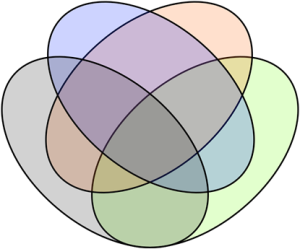
Figure 1.1. A Venn diagram can help to visualize intersectionality.[6]
(4) Freedom of speech and “political correctness.” Many diversity students worry that they will encounter limits to their verbal expressions and opinions. I encourage you, both in class and the real world, to express yourself directly and authentically. Remember, however, that diversity is fundamentally about respect. For instance, there’s a difference between respectful group names and racial slurs with long histories of dehumanization, violence, and abuse. Our actions (including talk) affect other people. It’s a bad idea to yell “Fire!” in a crowded room when there’s no fire, because that action is likely to hurt people. Similarly, it’s a bad idea to use slurs.
An example of how words can promote social inclusion is changes to traditional sexist language. Speech is sexist when it assumes a male perspective and excludes women. Grammar is not rooted in the nature of the world; society is capable of changing talk to pursue political goals such as inclusion of marginalized groups. Today we are used to sentences like “Each employee may bring their lunch”; or “Each employee may bring her lunch.” These grammatically correct sentences can refer to both women and men. They de-center the traditional assumed male perspective. However, in the 1980s (when I was in elementary school) teachers would only accept as correct “Each employee may bring his lunch.” Grammar has changed since the mid-twentieth century, reflecting the political impetus of feminism (see below).[7] At the time, many people felt angry and confused by this “politically correct,” gender inclusive way of speaking. Today, we are used to it. Just because something is traditional or old, doesn’t make it right (fair, just).
(5) Double standards. A behavioral standard might apply uniformly to all, or selectively depending on one’s social category. If Mike and Linda are judged differently for similar behavior, and if the reason is that Mike is male and Linda is female, that’s a gender double standard. Double standards are forms of social inequality. Often, traditional double standards were (and are) sexual: boys and men were often not criticized or punished for pre- or non-marital sex (fornication, adultery), whereas girls and women were. In general, this was/is a double standard regarding morality: males could get away with breaking the rules for proper behavior, whereas females couldn’t. For instance, men could get drunk and rowdy, but women couldn’t. Or men could use swear (cuss) words, but women couldn’t. Gender double standards have long been a major part of patriarchal cultures around the world—for instance, in both North America and Latin America (Freedman 2007; for Chile, Argentina, and Uruguay, see Lavrin 2005).


Figure 1.2.[8] Islam is the world’s second largest religion. Its 1.8 billion members comprise 24.1% of the world’s population.[9] In the 1800s-1900s, Catholic Americans were widely feared and perceived as “un-American.” Today, this religious bias reappears against Muslim Americans (Klinkner & Smith 1999:306).
1.3 A Sociological Approach to Diversity
This textbook takes a sociological perspective on diversity. Sociology is one of the social and behavioral sciences, like economics, psychology, anthropology, political science, and linguistics. Sociologists study the organization of social structures, processes, and relationships. They study the social world, whereas natural scientists (e.g., chemistry, biology, physics, geology, botany) study the natural world.
Sociology is a powerful tool for understanding diversity, but it may also seem disorienting and disconcerting. Like all education, it may lead us to question aspects of the conventional wisdom around us (Mills 1959). Sociologists study many topics of great social importance; relevant to diversity, these include race and ethnicity, discrimination and racism, race relations, immigration, mass incarceration, politics, social power, etc. They’re social researchers: they use scientific methods to produce quantitative or qualitative evidence supporting or failing to support theories about society (Patton 2002). Sociologists study topics from a particular scientific perspective on the social world. The four most important sociological theories, or perspectives, for understanding racial and ethnic diversity are discussed below: (1) conflict theory, (2) structural functionalism, (3) symbolic interactionism, and (4) feminism.
But first, just what is a sociological theory? We need to distinguish between “paradigms” (aka “grand theories”) and “testable theories” (aka “middle-range theories”). Conflict theory, functionalism, symbolic interactionism, and feminism are paradigms: scientific worldviews or perspectives on the world (Kuhn 1962). Although this concept has many shades of meaning, for our purposes paradigms are not themselves testable or falsifiable. Sociologists work within a particular paradigm. Viewing society with that lens has consequences: some aspects of society loom large in one paradigm, but their importance shrinks in another. Sociologists formulate testable theories based on a paradigm’s foundational observations. For example, feminism suggests that men dominate women. This general proposition can lead us to more specific, and empirically testable, hypotheses: for instance, “women do more unpaid household labor than men”; or “women are paid less than men for the same amount of work”; or “as a female-dominated job type includes more men, pay and prestige will increase.” Sociologists then choose the best research method to gather evidence to test the hypothesis. Repeated testing will tend to support the hypothesis or fail to support it—leading to advances in knowledge about society.
(1) Conflict theory. The most influential sociologists taking this overall perspective were Karl Marx (1818-1883), Max Weber (1864-1920), W. E. B. Du Bois (1868-1963), and Pierre Bourdieu (1930-2002). According to them, society is like a battlefield. Different social groups compete for power, resources, prestige, and control.
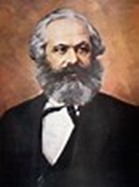

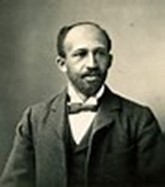

Figure 1.3. Marx, Weber, Du Bois, Bourdieu[10]
Often two particular groups are described as being in conflict with each other, with one exercising domination over the other (wealthy/poor; men/women; whites/people of color; etc.). Sociologists subscribing to this perspective usually start from Marx’s insights about economy and society (Tucker 1978). Marx, the most influential nineteenth-century communist (aka scientific socialist) intellectual, saw society as a setting of socio-economic classes in conflict. For instance, some people in Marx’s time owned significant property (like a textile mill), whereas others owned practically nothing except their sheer bodily capacity to work (aka labor power). Conflict theorists see the self-interest of each of these two classes of people as opposed (zero sum)—what’s good for management is bad for labor, and vice versa.
Few people today think that Marx was entirely correct in his social theory. However, virtually all people who study society regard Marx as one of the most insightful and important nineteenth-century sociologists.[11] He opened up new ways of understanding society that today’s social scientists and historians (of all political stripes) use all the time and take for granted. For example, how might the social group of males be analogous to wealthy people with many resources (capital)? How might the social group of females be like laborers with few resources? How are male and female adult identities outcomes of a long process of “production” starting in infancy?
(2) Structural functionalism. Three of the most influential structural functionalists were Emile Durkheim (1858-1917), Talcott Parsons (1902-1979), and Robert K. Merton (1910-2003).
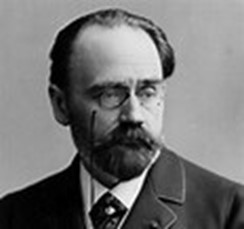
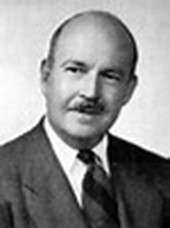
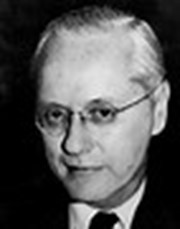
Figure 1.4. Durkheim, Parsons, Merton[12]
To functionalists, society is like the human body. Different social institutions or spheres (economy, law, politics, education, housing, medicine, etc.) each contributes to the well-being of society as a whole. The body’s overall health and well-being is based on the harmonious collaboration of different systems (nervous system, circulatory system, muscular system, etc.) and organs (heart, brain, stomach, etc.).
Durkheim was the single most influential functionalist sociologist. In his view, the different social institutions all work together for the well-being of society as a whole. What’s good for one area (say, the economy) is good for the other areas (say, education). Likewise, different social groups share common interests. For instance, functionalists argue that public policy benefiting the middle class also benefits poor people, and vice versa. Policies that benefit white people also benefit black people. In this perspective, internal conflict is bad for the health of the human body, and likewise bad for social health. The 1960s saw many sociologists beginning to question the continuing usefulness of Durkheim’s emphasis on social cohesion rather than conflict. However, more recent work has highlighted ways that Durkheim remains relevant or was misunderstood (Emirbayer 2003; Rawls 2005).
(3) Symbolic interactionism. Three thinkers who deeply influenced the symbolic interactionist (SI) tradition were George Herbert Mead (1863-1931), Harold Garfinkel (1917-2011), and Erving Goffman (1922-1982). These sociologists observe that society is based on many individuals interacting with each other (Mead 1934).
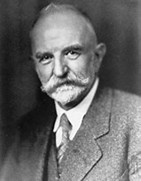
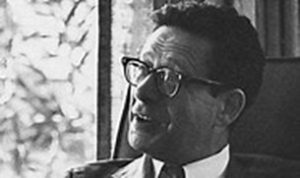

Figure 1.5. Mead, Garfinkel, Goffman[13]
People are constantly talking with each other, acting in reference to other people. People use symbols such as language in their interactions, and thereby make the world seem familiar, recognizable, and ordinary. This theoretical perspective highlights the ordinary social interactions that we engage in every day: talking with your mom about how someone’s joke at school made you feel, small talk about the weather with your co-worker at the grocery store, texting your best friend about a movie, etc. These interactions depend on symbols (especially spoken and written language, and gestures), and our ability to use symbols with ease, without even having to think about our ordinary ability to speak words or type texts. Symbolic interactionists argue that it’s essential to study ordinary social interactions, in order to explain how society works. For example, to better understand how society marginalizes transgender people, sociologists might interview transgender people and cisgender people, identifying shared and contrasting themes from their experiences and views about gender identity.
(4) Feminism. Three feminist thinkers who have strongly influenced sociology are Simone de Beauvoir (1908-1986), Dorothy E. Smith (1926-), and Patricia Hill Collins (1948-).
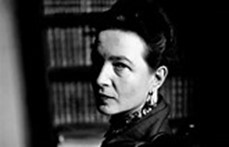
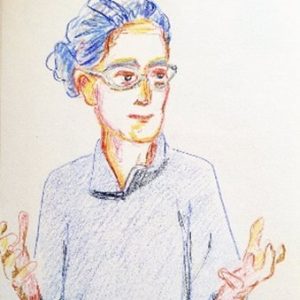
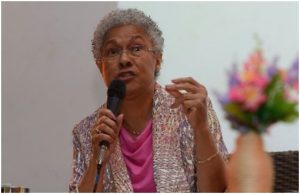
Figure 1.6. De Beauvoir, Smith, Collins[14]
The domination of men over women is a powerful historical force that continues today around the world (J. Collins 2003; Freedman 2007; Smith 1990). It’s important to understand how masculine domination works, in order to reduce or eliminate it. Feminism is a global social movement, starting in the 1800s in Britain and the U.S., demanding changes to traditional social roles of women (Regazzoni 2012). Feminists don’t agree on everything; there has been much controversy about what should change. Consequently, there are many different varieties of feminism: some are “conservative”; others are “liberal.” But all agree that traditional male control of women should change, giving women more power over their own lives. If you think that women should be able to vote and hold elected office, work for pay outside the home, or refuse sex on demand from their husbands—then you are a feminist of some type. Each of these items encountered massive resistance (especially from men, but also from many women), requiring generations of intense political activism since the 1840s to achieve in the U.S.
Basically, feminism seeks to understand and overcome one of humanity’s oldest ideas: that men and women have different essential natures, with male nature superior to female. According to Aristotle (384-322 BCE)[15] for instance, man’s essence is active, commanding, brave, and intelligent, whereas woman’s essence is passive, obeying, cowardly, and emotional. For most of human history, to be fully human meant being male. By contrast, women had two options: saint or slut. Pretty much the only culturally approved role for an adult woman was being a mother or nun (“saint”). If women didn’t follow the rules, they were accused of immorality (“slut”).
The history of feminism has featured three (or perhaps four) eras or “waves.” (It’s not yet clear if the “fourth wave” is different from the “third wave.”) Notice that the gender revolution started only 200 years ago, with many changes happening since 1960. This is a blip in time compared to most of human history.
Table 1.2. History of feminism
| Name
|
Era | Description |
| First-wave feminism | 1800s-early 1900s | Concentrated on changes to law: property rights, voting rights, etc. A social movement that started in Britain and US, then spread globally. |
| Second-wave | 1960s-1980s | Demanded greater equality with men in all areas of society (work, family, sexuality, education, etc.). Started in US, then spread globally. |
| Third-wave | 1990s-2010s | Continuation of second-wave, but more emphasis on individualism and diversity. More recognition of intersection of gender with social class and race (see “Intersectionality” above). |
| Fourth-wave? | 2010s-present | Renewed interest in feminism, recognizing that important past goals have not been met (female political representation, sexual harassment, violence against women). Social media is important resource and topic for fourth-wave feminists. |
Source: Freedman 2007
Sexual Orientation; Non-Binary Gender Identities. An important area studied by feminist sociologists is sexuality. In turn, a major dimension of sexuality is sexual orientation. Although most people are heterosexual (sexual attraction to opposite sex), it’s clear that homosexuality (sexual attraction to same sex) is fairly common in most societies. It’s also clear that nature and nurture interact to produce our sexual orientation: we’re born straight or gay, but we interpret this sexual attraction in terms of what we experience growing up. Some of history’s greatest achievers were lesbian, gay, or bisexual: for example, Oscar Wilde (British playwright), Marcel Proust (French novelist), Alan Turing (British founder of computer science), Sally Ride (American astronaut).
Sociological gender is not simply binary (female or male). For instance, most people with female sex organs experience themselves (identify) as “female” (cisgender). But in recent decades many people with non-binary gender identity have demanded freedom from abuse, shaming, and force-fitting into female/male categories. For instance, people with male sex organs who experience themselves as female are transgender. Sexual orientation and non-binary gender are important parts of the spectrum of human sexual identities. The formerly marginalized identities are summarized with the acronym LGBTIQ (aka LGBT+). The letters stand for lesbian, gay, bisexual (sexual attraction to both females and males), transgender, intersex (having both female and male genitalia or sex organs), queer (an umbrella word for non-heterosexual, non-cisgender). It’s not always easy to interpret one’s sexuality or sexual experiences, and Q can also mean “questioning” (unsure of one’s sexual or gender identity).
Like gender, neither is biological sex simply binary (female or male). Although most humans are chromosomally male (XY) or female (XX), some people are born with an “extra” X or Y chromosome (Klinefelter Syndrome, XYY Syndrome). This is a biological fact. Whether we interpret this fact negatively (as a “disease” or “syndrome”) or positively (as “diversity”) is a cultural choice.
1.4 A Comparative Approach to Diversity
Like the sociological approach, the comparative perspective—which contextualizes U.S. diversity processes and topics in international comparisons and contrasts (Fredrickson 1981:xiii)—is a core feature of this textbook. Since 1945, the U.S. has been the predominant military, economic, cultural, and ideological power in the world, with global commitments, relationships, and interests (see Chapter 13). American globalism has played a key role in post-WWII U.S. diversity processes like the black civil rights movement and immigration (APAN:II; Klinkner & Smith 1999). To adequately understand diversity—like many other dimensions of American society during and after the Cold War—we need to see the international context (Cristancho et al. 2008).
In the twenty-first century, demographic changes since the 1970s have badly dated older discussions of racial-ethnic diversity, especially those focusing on “white-black” contrasts while ignoring other groups (Gómez 2018:157). As sociologist Eduardo Bonilla-Silva (2018) observes, “the United States is slowly moving toward a triracial or ‘plural’ order similar to that found in many Latin American and Caribbean countries” (16). This plural order especially involves mestizo (mixed non-European and European ancestry) and indigenous (Native American)—as well as black and white—racial identities. Likewise, Asian-origin populations have grown since 1965. Diversity students need information on these international processes, given the ongoing demographic changes forming the future (mid-twenty-first century) America in which today’s high school and traditional college-aged students will live most of their lives.
In recent years, comparative perspectives have become even more necessary as many Americans have embraced a strident, aggressive U.S. nationalism and (white) Americanism, often based in ignorance both of nonwhite American cultures and other nations and cultures (Feagin 2020:272). Socially powerful groups usually have significant blind spots in relation to less powerful ones, and the relationship of the U.S. to Latin America is no exception (Delgado & Stefancic 1998; Feagin & Cobas 2014). Many North Americans have little awareness of this world region beyond stereotypes, even though it continues to powerfully impact our national experience and politics (Davis & Moore 2014; Hernández 2010). In particular, Latin America has much to teach the U.S. about multiracial democracy (cf. Feagin 2020:Ch.9; Telles 2004). By the early twenty-first century in many Latin American nations, African or Native American ancestry remained a social obstacle; many continuities with the explicitly racist past were evident (Chasteen 2001:314). However, although multiracial societies like Brazil, Mexico, Peru, Argentina, and Cuba have not transcended racism, their embrace of indigenous American and African identities has often gone further than in the United States (ibid:217).
This textbook offers a wide vista of international facts and perspectives, helping you see beyond narrow categories of nation, race, language, citizenship status, and religion, toward broader understanding of human unity. Essentially, the book performs two, complementary tasks: (1) teaching the U.S. context (the contemporary relevance of diversity events and processes in U.S. history); and (2) teaching the comparative perspective (comparison and contrast of U.S. experience with other societies). It does so in one possible way, by highlighting North America’s many historical, economic, political, and social relationships with Latin America and the Caribbean.
Ultimately, this book’s goal is to empower you: to build your knowledge about today’s America, to familiarize you with racial-ethnic difference, and to offer tools for engaging more effectively in community life and global society.
Chapter 1 Summary
Chapter 1 began Unit I (Introducing Diversity) with general discussion of racial and ethnic diversity. Section 1.1 explained why studying diversity is worthwhile, briefly discussing the history of this kind of education. This topic has benefits, in particular, for rural and smaller-town students in developing broader connections with their home regions and states. Table 1.1 (racial-ethnic group percentages of the U.S. population) helped to make this point.
Section 1.2 presented five concepts basic to diversity learning. Especially important here was the definition of diversity as both a fact and a value. Although the textbook’s main focus is racial-ethnic diversity, gender and sexuality themes relevant to diversity were also introduced here.
Section 1.3 explained what a sociological approach to diversity learning means. Four major sociological theories are conflict theory, structural functionalism, symbolic interactionism, and feminism. Table 1.2 introduced the four eras or waves of feminism’s history.
Section 1.4 introduced the textbook’s comparative approach to diversity. It explained the value of understanding U.S. diversity in international perspective, especially through comparisons and contrasts with Latin America.
[1] Image: Creative Commons license
[2] CREDIT LINE: Excerpt(s) from SAVAGE INEQUALITIES: CHILDREN IN AMERICA’S SCHOOLS by Jonathan Kozol, copyright © 1991 by Jonathan Kozol. Used by permission of Crown Books, an imprint of Random House, a division of Penguin Random House LLC. All rights reserved.
[3] “National era”: post-1776, after the U.S. declared itself an independent nation.
[4] By “value,” I mean treatment of some existing or possible practices, beliefs, or states of affairs as better or more desirable than others.
[5] Source: Marion Technical College Welcoming Committee Description, 6/23/16.
[6] Image: Creative Commons license
[7] Another example is the gender-neutral “mail carrier” replacing “mailman.”
[8] Images: Creative Commons license
[9] Source: Wikipedia, “Islam.” Accessed 2/5/21.
[10] Images: Public domain, Creative Commons license
[11] Though Marx described himself as a political economist rather than sociologist.
[12] Images: Public domain
[13] Images: Public domain
[14] Images: Public domain, Creative Commons license
[15] “BCE” (before the Common Era) means “BC” (before Christ). Likewise, “CE” (Common Era) means “AD” (anno Domini = in the year of the Lord).
